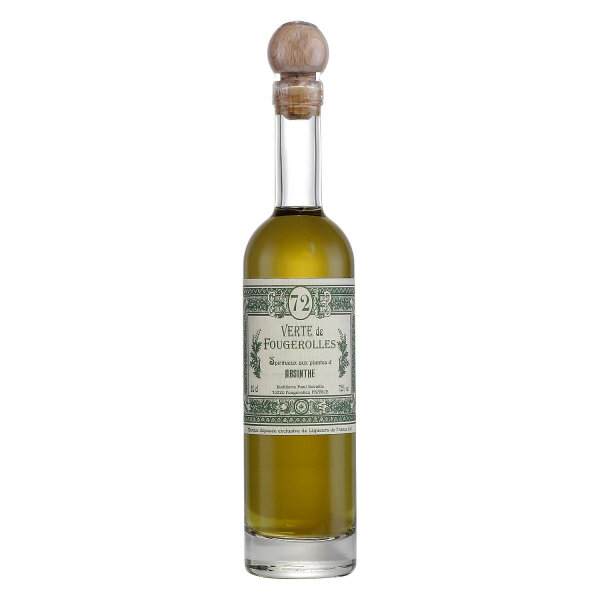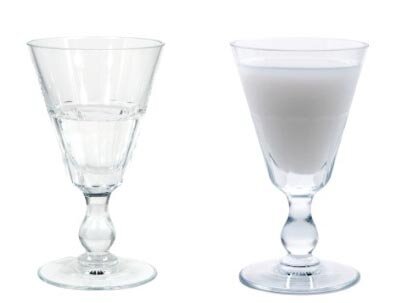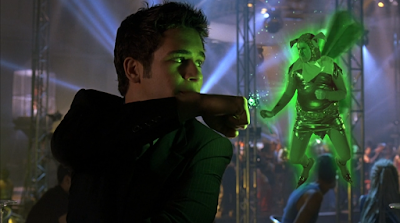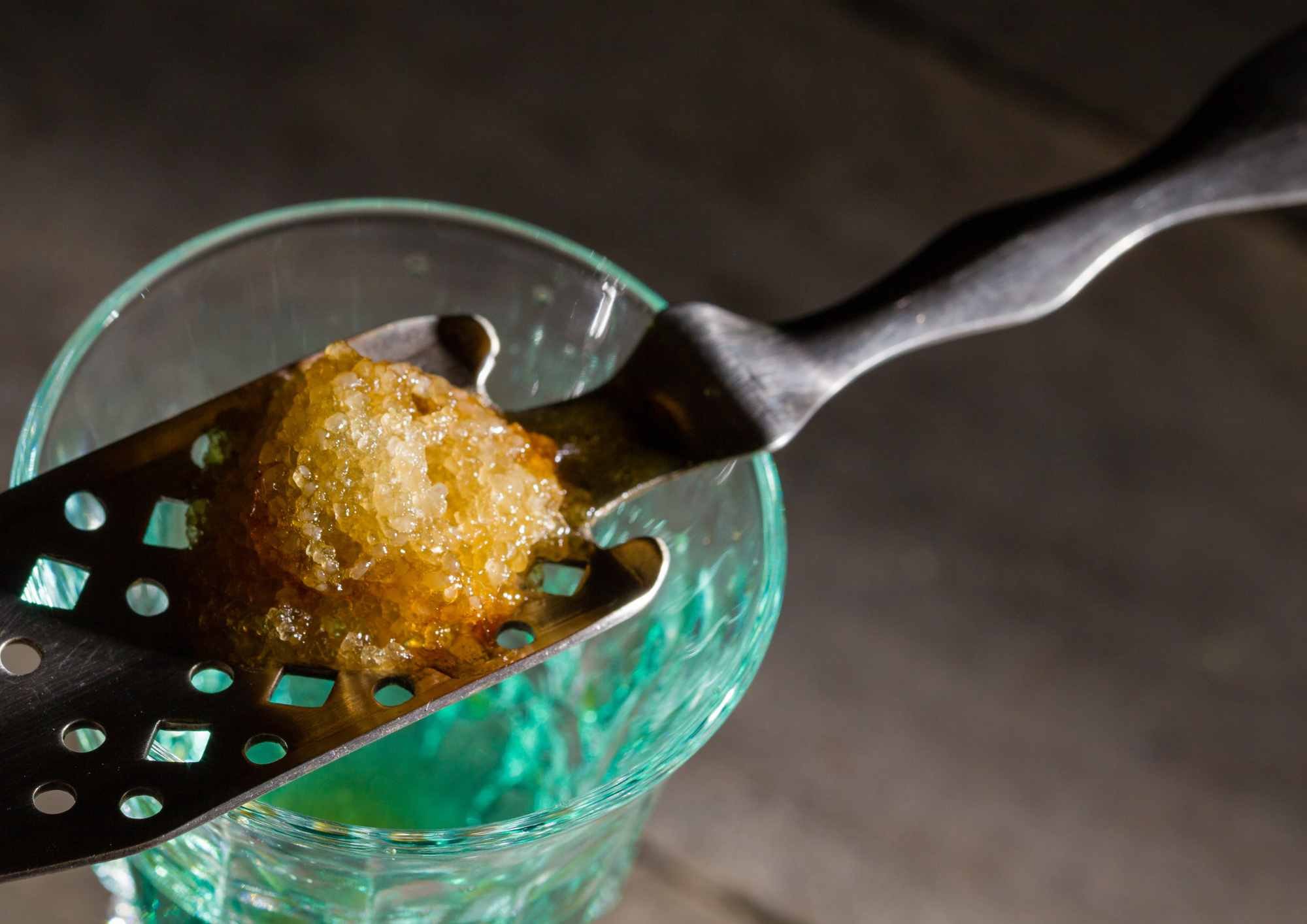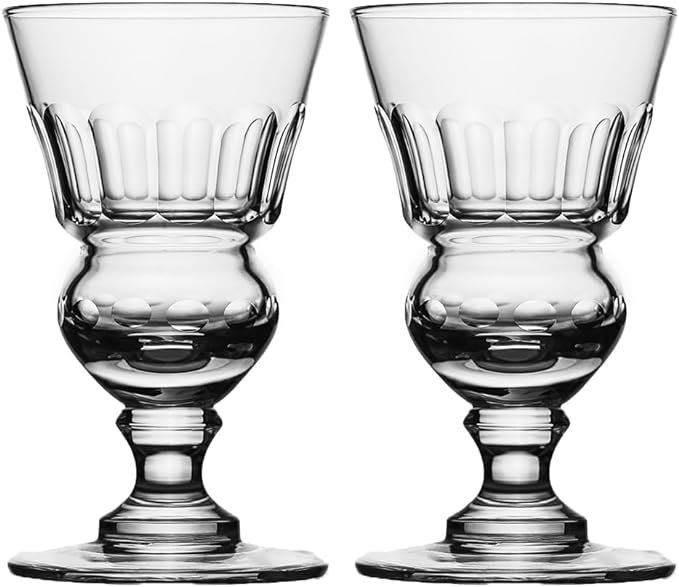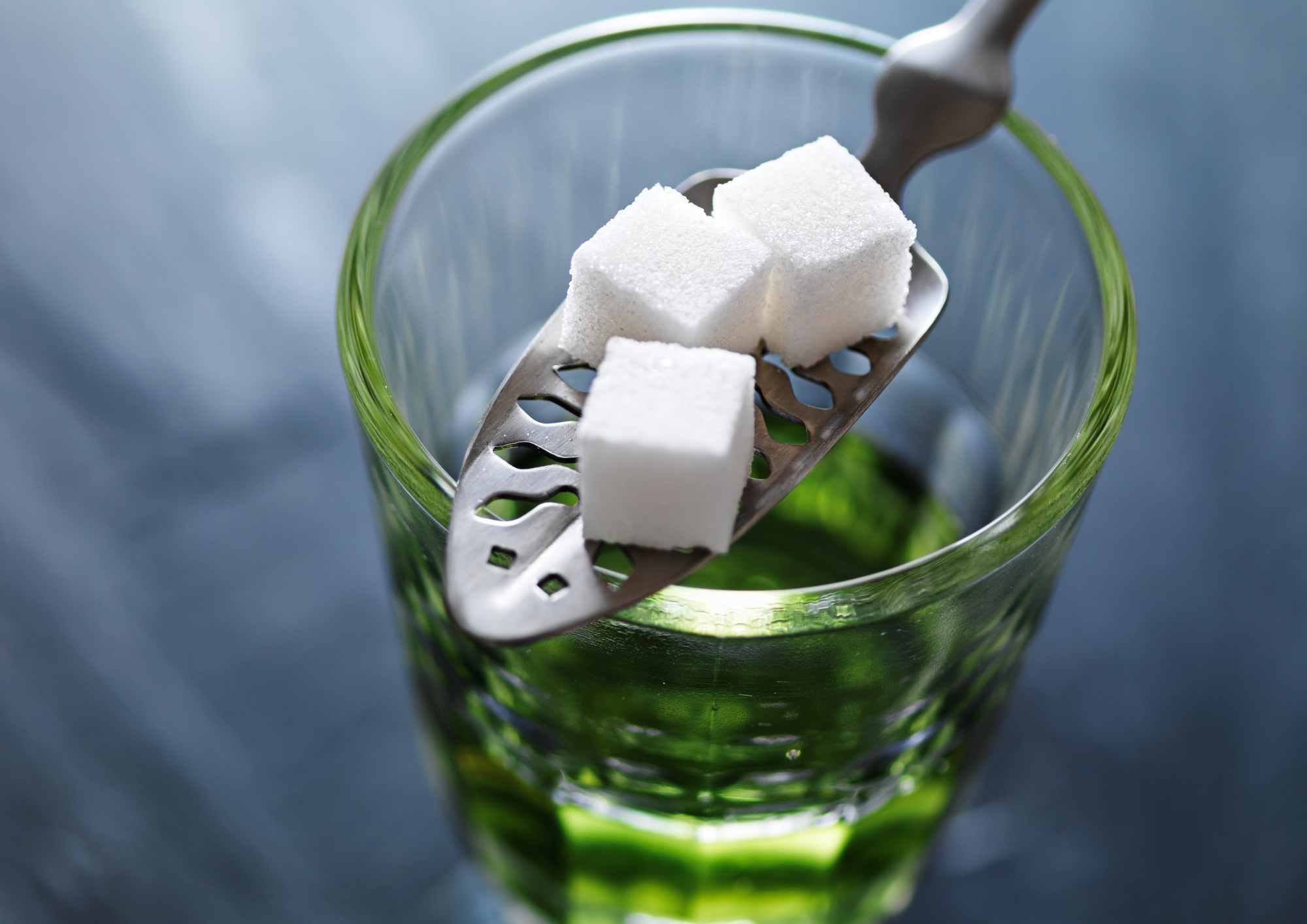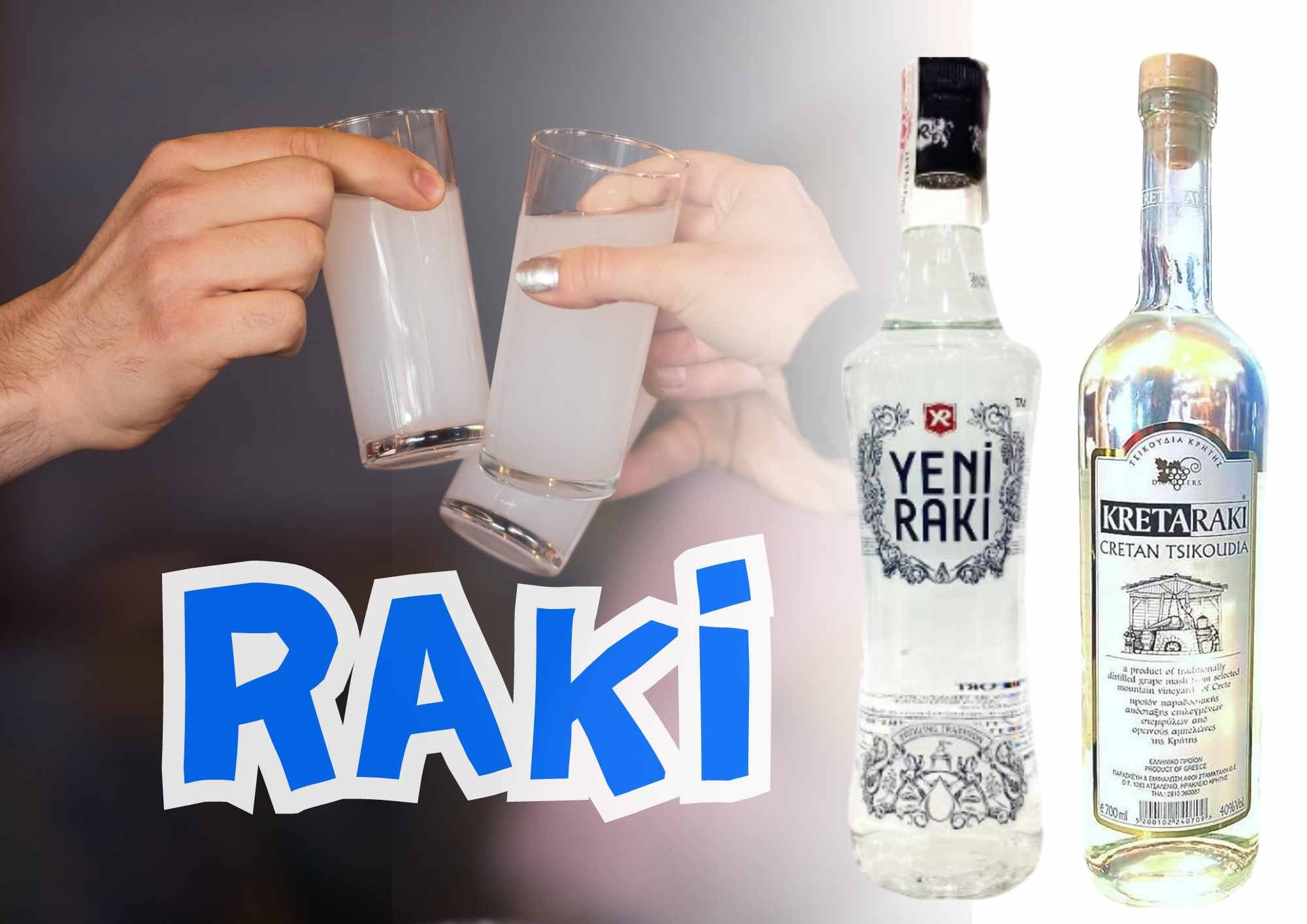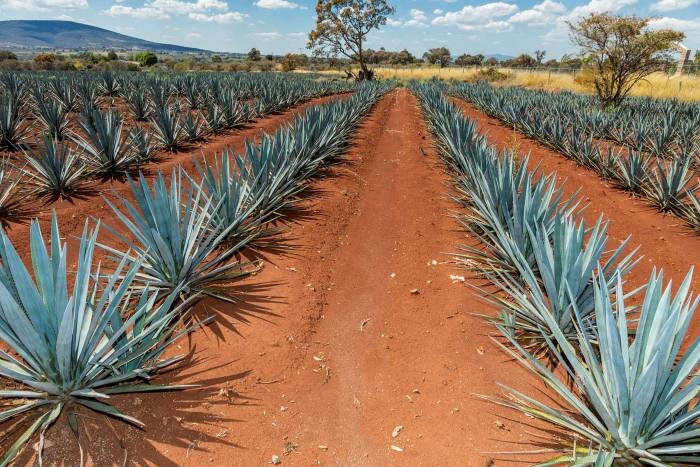What Is Absinthe?
The ultimate guide to the worlds most misunderstood spirit - Absinthe
Green fairy hallucinations, death and creative inspiration. Let’s explore the spirit that made Vincent Van Gogh go crazy, made people hallucinate and got banned in the UK and USA. This is the ultimate guide to the worlds most misunderstood spirit - Absinthe.
Absinthe is one of the most misunderstood spirits in the world. It’s shrouded in myth and legend. “the green muse” or La Fée Verte - “the green fairy”.
From stories of driving people to mass murderous rampages to famous artists cutting off body parts. Yes, I am talking about Van Gough. But you’re probably more familiar with seeing it in films as the ultimate f&@k you up drink.
Absinthe has evolved a lot from the early days of the 1920s but has kept its respect well intact. So before you go grab yourself a bottle of La Fee and mix it like you would any other spirit, let's first take a trip to Absinthe 101.
Throughout this guide we will talk about what absinthe is, how it's made, the history of absinthe and how to drink and serve this elusive spirit whilst separating the bad from the good, myth from fact and answering all your absinthe questions along the way.
Prefer to Listen? Check out the podcast episode on Absinthe: The murders that caused a 100 year ban of Absinthe
What is Absinthe
Absinthe is a strong, high ABV alcoholic spirit distilled with a range of botanicals from herbs and spices, the main botanicals being Anise, fennel and wormwood.
There are two main styles of Absinthe, Verte and Blanche. However, those styles are made differently depending on the country of origin. Which we will cover below.
How to pronounce Absinthe - Ab-snth
What does Absinthe taste like - Licorice. Being Anise forward, Absinthe tastes very similar to other anise flavour spirits and liqueurs such as Sambuca.
Understanding Absinthe Styles
One of the most confusing parts about the understanding of absinthe is understanding the different styles. Although there are the two main styles covered above, Blanche and Verte. Each country produces absinthe in different ways creating different sub-styles.
To compare Absinthe styles in a way you may better understand, think of it like Rum. With Rum you have these 3 different styles - French Rhum, Spanish Ron and English Rum. Yet within all those categories you have the sub-styles we are all too familiar with - Spiced, White, Gold, Anejo and XO.
That’s kind of like Absinthe. 2 main styles broke up into 3 countries styles. I guess seems so each country makes these 2 styles, and there are 3 countries styles, you could say there are technically 6 styles.
But don’t worry if you don’t understand just yet. You will.
So let’s jump into some of these styles and locations and explain the differences.
Blanche and Verte
Blanche and Verte are styles of absinthe that can be made in different locations. These are the easiest to tell apart as they refer to the colour.
Blanche Absinthe
Blanche meaning “white” in French may also be referred to as la bleue in Switzerland. These are clear Absinthes which are bottled directly after distillation. Absinthe with colour will go through a secondary phase of maceration which gives them their colour. A stage Blanche absinthe doesn’t go through, hence the clarity.
Fun Fact: This style of Absinthe comes from the time when Absinthe was banned from being produced. Swiss bootleggers kept their absinthe clear in order to pass it off as a different spirit.
Although this style of Absinthe is now less popular throughout most of the world, it’s now considered the traditional swiss way of making Absinthe.
Verte Absinthe
Verte meaning “green” in French and sometimes referred to as “La Fee Verte” or “The Green Fairy” in English.
This style of Absinthe starts off as a Blanche then gets its green colour by steeping the final distillate with chlorophyll-packed herbs. Making these Absinthes noticeably more herby in taste then Blanche, which tends to be more liqorice forward.
Vertes are typically more alcoholic than blanches, as the high amounts of botanical oils conferred during the secondary maceration only remain miscible at lower concentrations of water. Basically, Absinthe has large infusions of oils from botanicals which when mixed with water would separate. So in order to keep them intact they need to be bottled quite strong. Usually about 68%.
Green Absinthe is by far the most popular in today's world. It’s what people expect when they get Absinthe. Because of this, some companies will artificially colour Blanche absinthes green. Then they claim it to be verte, though they lack the characteristic herbal flavours that result from maceration in whole herbs. So be careful of that.
How to spot a fake: Generally if you spot a green absinthe which is lower then 55% it usually means its a verte imposter and you should stay clear. Or if the green colour is electric. A natural verte will be somewhat of a murky green like the above photo, if its bright electric green then its usually what? That’s right. An imposter!
So just to sum up because I know that can be a little confusing. All you need to know is the following:
Blanche Absinthe is licorice forward and clear in colour
Verte is very herbaceous, Green in colour and has a higher ABV.
Now we have an understanding of those styles, we can look into the subtle differences from how different countries make their Absinthe.
Absinthe Styles by country
French Absinthe
Typical French Absinthe is Verte in style. Historically Blanches have and still will be produced in France however the main style French Absinthe sticks to is Verte. This is where The Green Fairy comes from. So expect a big hit of anis with that herby flavour we would expect from the steeping of verte.
Typically, French Absinthe will be bottle at 68% Alc. and should be served with 4-6 parts iced water poured over a sugar cube (which we will get to in the how to drink section - part 3)
Swiss Absinthe
Swiss absinthe as we have already spoken a little about is usually Blanche or la bleue in style. They tend to be naturally sweeter so sugar is not usually added. They also tend to have more of a fennel taste to them and are generally bottled at 50-55% alc. Much lower than the French standard but by no means a lower standard of product.
Czech/Bohemian Absinth
The first thing you are likely to notice about Czech Absinth is the missing “E” in the spelling of absinthe. Theirs not much on the history of Czech absinth but it’s thought to have come about sometime after the French absinthe ban in 1915.
Czech absinth tends to have a really subtle anise flavour. They tend to barely use any when they make absinth. They also tend to be eclectic blue-green in colour and do not louche in when water is added. Don’t worry, I’m about to explain louche.
Both swiss and French absinthe are very traditional and are served in such a manner. Usually mixed with water to dilute the overly strong abv and are sipped and enjoyed like a Pastis (pastis is an anise-flavoured spirit and apéritif usually drank before a meal)
Whilst Czech Absinth, because of their lack of anise and lack of louche are usually favoured for cocktails. Being used mainly to rinse glasses in drinks like Sazeracs or mixed in cocktails such as corpse revivers.
What is Louche
When water is added, some Absinthes turn cloudy. Verte absinthe will turn from a bright vibrant green to a soft milky green, and Blanche will turn from crystal clear to pure cloudiness. This is Louche.
Left - straight shot of absinthe. Right - Louche once water has been added. Image source
This happens due to certain botanicals (anise and fennel) not being water soluble. So once they are hydrated with the addition of water, they drop out of solution with the alcohol and turn cloudy.
La Fee blanche Absinthe Louche - image source
This is a good thing. Not only does the addition of water and louche dilute the Absinthe but it also causes a chemical reaction which releases all the subtle flavours within the liquid.
A good louche is usually a sign of a high quality absinthe.
How Absinthe is made
Absinthe is made very similar to that of Gin. Essentially and like gin, it's a sort of flavoured vodka. Producers take neutral grain spirit and macerate it with different botanicals. The key botanicals being anise, fennel and wormwood.
That macerated spirit is usually then redistilled once or twice in copper pot stills to create a completely clear, liquorice tasting product which is around 65-80% ABV.
At this stage, the absinthe can be diluted with water then bottled or bottle straight from the still. Which is what Blanche is.
La Fee Absinthe stills - Image source
The absinthe can then go through a secondary maceration process.
This second stage of maceration usually involves botanicals petite absinthe (artemisia pontica), melissa and hyssop.
This is the stage that gives absinthe verte it’s emerald green colour.
The History of Absinthe
Early days of Absinthe
Belle Époque, The Golden Age of Paris. One of the most creative times in History. Where poets, artists and authors mingled together down at the Moulin Rouge. Henri de toulouse-lautrec, Pablo Picasso and Van Gogh amongst other famous artists all had two things in common. They were creative and they drank absinthe.
Allegedly its what drove Vincent van Gogh mad. So much so he cut his own ear off. Ernest Hemingway would drink absinthe and subsequently perform knife tricks at the bar. Author Oscar Wilde said it perfectly "A glass of absinthe is as poetical as anything in the world. What difference is there between a glass of absinthe and a sunset?"
So how is it that this poetic sunset of liquid went from being the inspirational booze known for spurring on world renowned art to being the devils liquor banned from production after murderous absinthe rampages? For that we must start at the beginning!
The creation of Absinthe
Absinthe was first created in the 1790s by Pierre Ordinaire a French doctor who was living in Switzerland. Pierre created absinthe as a elixir rumoured to cure everything from flatulence to anaemia. However this was not the first wormwood spirit used as a stomach ache cure by no means. Ancient Egyptians and Greeks prescribed wormwood for ailments like menstrual cramps and fevers.
Although lots of botanicals go into making Absinthe what it is. Wormwood is the key. Wormwood is naturally rich in thujone. Which is a chemical compound that excites the central nervous system. We will talk more about the sciency part of that in part 3 of this guide.
Commercial production of absinthe began in the late 1790s. Ordinaire passed down his absinthe recipe on his deathbed to the Henriod sisters who began selling small batches of the Absinthe. A man named Major Dubied bought the recipe from the Henriod sisters and began manufacturing it in Couvet, Switzerland. Aromatic flavours like warm anise and sweet fennel were added into the recipe as it was produced as an apéritif.
It’s worth noting that some stories claim that the Henriod sisters were already making absinthe long before Dr Ordinaire and that it was there own recipe.
Whichever the case may be, we know it ended up in the hands of Major Dubied who down the line passed it down to the hands of Henri-Louis Pernod, father of the Pernod brand.
Henri-Louis Pernod
Absinthe started gaining more popularity outside of Switzerland in the 1850s when it was given to French troops as a malaria preventative. Soldiers' taste for Absinthe ensured its presence in local bars in Paris. And by the 1860s, the French five o'clock happy hour was called l'heure verte or "the green hour."
The Great French Wine Blight
During the mid 1800s Absinthe was starting to pick up popularity in France due to French soldiers having a taste for the liquor. But what really helped push Absinthe into the spotlight was the great French wine blight.
Around 1860, an unknown disease started whipping out entire French vineyards. Causing grapes and vines to simply rot away. It turned out this disease was due to a bug that was imported from America.
This tiny little bug had managed to single handedly crippled the wine industry. After much debate the insects were identified as an American aphid-like bug called phylloxera.
The French government offered 300,000 francs to anyone who could create an effective insecticide. But by the 1890s, when all other efforts seemingly failed, they started the long process of grafting French vines onto American rootstocks, as well as developing hybrid vines that could thrive in French soils.
Which means nearly all French wine comes from vines grafted onto American roots. Makes you think doesn't it, just how fragile the wine industry is. Almost as fragile as our bar industry during the 2020 Covid-19 pandemic... A whole culture of French wine gone in years and replaced with hybrid American vines. Bet if someone found an original French vine that would be an absolute gold mine.
Anyway, I digress, my point is, French people loved wine and drank a whole lot of it. So when there was this mass shortage they needed something else to turn to. Enter the new to France spirit that’s gaining popularity. Absinthe.
Every wine drinker swaps their wine glasses full of delicious French wine for shots of absinthe diluted in water.
The issue is wine is about 13% ABV, Absinthe is around 68%. That's a big difference, even when diluted with water.
Creative Era
So, Absinthe is now popular around Europe and grows even more popular with artists. You remember that Thujone we were speaking about before? The thing in wormwood that excites the central nervous system? It has a slight effect on the brain that, well, I suppose makes people feel creative. I mean sh%t have you seen the kinda stuff Picasso painted? That’s weird even for today's standards never mind the formal paintings of France in the early 1900s.
Because of this effect it gained mass popularity with artists, poets and authors and it just so happened this was around the early 1900s which was the golden age of Paris. Meaning there were a lot of creatives. It’s said that Van Gogh's madness and art came straight from his absinthe drinking habits.
It’s even believed he would drink turpentine and paint to feel the same effects that Absinthe did. Did Absinthe spur that creativity on? Who knows. Do we have Absinthe to thank for the art we see today seems so a lot of it evolved from this time in Paris? Who knows. I’ll let you be the judge.
Absinthe smear campaigns
By the 1880s mass demand for Absinthe meant mass production which led to a price drop. Absinthe became more accessible for everyday people and by 1910 the French were drinking more then 36 millions litres of the green stuff a year, Rivalling wine sales.
Now as the story goes this got wine producers shaking in their boots. Leading to mass smear campaigns attempting to discredit absinthe as a way to get people drinking wine again. The fight was on, wine vs absinthe and wine fought dirty.
This fierce competition led to fabricated claims and campaigns orchestrated by wine producers to change absinthes association with medicine and creativity with violence and crime.
Edgar Degas' 1876 painting "L'Absinthe" portraying a woman drearily slumped over her glass of absinthe depicts the attitude towards the drink at the end of the century.
Edgar Degas' 1876 painting "L'Absinthe
They even gave a name for drinking too much absinthe - Absinthism.
Characterised by not just being drunk, but the hyperness, excitability and hallucinations that drinking absinthe would cause.
There was even claims that absinthism was hereditary and you could pass it down to your children.
Now, it was true that the absinthe of this time had somewhat of a mind altering effect due to the amount of wormwood in the distillate. However, it was never as bad as you was thought to of believed. Its just something that was exacerbated by smear campaigns.
There are even rumours of Parisians asking for “a ticket” when ordering absinthe in bars, a reference to a ticket to Charenton, the infamous lunatic asylum just outside the city.
A lot of these fearmongering campaigns usually depicted absinthe as the green fairy. A green lady taking over an absinthe drinker or a skeleton representing death and the hellish intentions of Absinthe.
Below are some example of these absinthe green fairy and smear depictions.
Why was absinthe banned?
The nail in the Absinthes coffin - Jean Lanfray
Sure, these smear campaigns did tarnish the reputation of Absinthe and turn a lot of people of drinking the stuff. However, if anything it made other people want to have it more. This elusive, mind-altering drink that can drive artists to cut of there own ears and bend your mind. It was intriguing.
It wasn’t until 1905 when a man named Jean Lanfray secured the death of Absinthe (aswell as a few others).
On the 28th of August 1905 in a village in Switzerland. A French labourer murdered his pregnant wife and his two children in a drunken rage. Jean had drank a lot that day, He had drank 2 shots of Absinthe, one in the morning and one in the afternoon. He then had 6 glasses of wine followed by a further glass after work. On his way home he stopped by a cafe and had a brandy laced coffee.
This is a story covered in my Nightcap Podcast Absinthe Episode found here: The murders that caused a 100 year ban of Absinthe
There are also references to him having a further litre of wine and/or two crème de menthes. Either way, the man could drink. And drink he did.
Once he got home he ended up getting into an argument with his wife over the fact she refused to polish his shoes, calling him lazy. In response he grabbed his rifle and shot her square in the face. She was pregnant at the time. When his daughter came in to investigate he shot and murder her too. He then went into his second daughters room and shot her. To finish it off he turned the rifle on himself and shot himself in the jaw.
When the police arrived he was shockingly still alive. After his brief hospital visit he was sentenced to trial. With absinthe being slandered as a liquor that drove people mad and being at the height of moral panic in Europe. The media decided to solely focus on the 2 shots of Absinthe he had drank that day. The truth is he had much more wine then absinthe however absinthe made for the better story at the time.
Jeans attorney also focused on the absinthe, claiming Jean wasn’t to blame for the murders as he was suffering from “Absinthe maddness” Dr. Albert Mahaim, a leading Swiss psychologist, testified to that point.
The judge argued that the two shots of Absinthe was minor in comparison to the amount of alcohol Jean had consumed that day and sentenced him to 30 years in prison.
Three days after the trial Jean Lanfray committed suicide by hanging himself in his cell.
The Lanfray case received an astonishing amount of media coverage which set off a moral panic against absinthe in Switzerland. A petition to ban absinthe in Switzerland received 82,000 signatures and on May 15, 1906, the Vaud legislature voted to ban absinthe.
Following pressure from café owners and absinthe manufacturers, a referendum to reverse this decision was launched, but failed 23,062 to 16,025. On February 2, 1907, the Grand Conseil voted to ban the retail sale of absinthe, including its imitations.
Soon after, France, as well as many other European countries and the US followed and banned absinthe. In Fact the only countries that did not ban Absinthe in and around Europe was the UK and Spain. However, given that all the producers was from Czech, Switzerland and France where it was banned. It wasn’t produced.
Absinthe was finally made legal again
It wasn’t until 1988 that Absinthe would be made legal again in Europe. Provided the amount of thujone falls within the agreed limit of 10mg/kg, or 35mg/kg for absinthe bitters. And 2007 in the US.
The story as you can agree is crazy. When we think of France we think wine. However for almost half a century Absinthe was the national drink of France and Switzerland. Some of the most prominent artists, poets and authors in history would swear by the stuff.
If it never got banned, Absinthe would be something we all drink and enjoy. Absinthe would be today what gin is. But after 80 years of being banned it had to start from fresh.
What we have to remember is that it was only 14 years ago when it was made legal in the US. That’s almost a 100 year ban! I predict with due time Absinthe will once more reign across Europe!
Now you know the history of absinthe, why not check out part 1 - How Absinthe is made and the styles of absinthe. Or move on to part 3 where we take a closer look at the claims of absinthe hallucinations, the green fairy and how to serve Absinthe.
The Green Fairy - Absinthe Hallucinations
Kylie Minogue as the green fairy in Moulin Rouge
When it comes to Absinthe, one question people have is whether or not it can make you hallucinate. This “creativity” and imagination that artists got from drinking the green liquor are said to come from the hallucinations of drinking absinthe.
Early on Absinthe got the name la fée verte meaning the green fairy. Due to both the vibrant emerald colour and the love people had for it. Not to do with hallucinations.
However, the majority of artwork depicting absinthe shows this hallucinogenic green fairy. Even if Absinthe did make you hallucinate not everyone would see the same thing. The whole green fairy hallucinations myth is more like the bloody Mary or Candyman tails more than science.
Now I’m not saying no one has hallucinated a green fairy whilst drinking Absinthe. It’s all in the mind. If you are drinking from a bottle with a green fairy on the bottle, surrounded by people telling you that you will see a green fairy. Then you’re probably more then likely going to imagine up a green fairy.
It’s like when you’re in a spooky house and everything out the corner of your eye or anything that casts a shadow looks like a ghost.
It also plays well to depict a green fairy in movies when people hallucinate of Absinthe. Its not true, it just works well for films.
Absinthe is always shown as the ultimate f%ck you up drink in films.
Now. The green fairy myth out the way, there's probably a question you’re still unclear about…
Does Absinthe Make You Hallucinate
The short answer is no. Drinking absinthe will not make you hallucinate. Did it use to make people hallucinate? Quite possibly.
Throughout this guide we spoke about thujone. Thujone is the chemical in Absinthe which is blamed for its possible hallucinogenic properties. It’s the compound found in wormwood, one of the main ingredients in absinthe.
Thujone Absinthe
Thujone is a psychoactive ingredient which in high doses is toxic. It also blocks GABA (Gamma-aminobutyric acid) receptors in the brain, however that will cause seizures not hallucinations.
It's good to note that thujone shows up in a lot of foods and drinks not just absinthe. It's only toxic in high doses, most things are. Lest we not forget apple pips contain cyanide.
However, it is possible that back in the early days of absinthe thujone was at a higher level within absinthe that COULD have contributed to these stories of madness. Nevertheless, keep in mind absinthe averagely has around 68% ABV (alcohol by volume).
It’s a very strong drink. If you are driven to madness and hallucinations then it's most likely because you are drunk. Not tripping on thujone.
It’s like when people drink 5 bottles of red wine then say they’re not hungover, they're just allergic to sulphites. Who you trying to fool? You know damn well its the 5 bottles of wine that’s making you feel sick not the sulphites in that wine.
It’s also good to note that thujone in absinthe is regulated to a non toxic amount. So you will never feel the effects of it no matter how much you can drink. Anyone who claims that they have hallucinated from drinking absinthe was either taking drugs at the same time or is just down right lying to you.
Even in the early days when it wasn’t regulated, you would still have to drink an awful lot before feeling it. So much in fact you would be long passed out from the alcohol intake before you reached that level.
The Art of Serving Absinthe - Fire vs Water
Absinthe has always been popular in cocktails. Just a dash of the green stuff will add depth and complexity to any cocktail. However, when it comes to serving absinthe on its own. There is a whole ritual and tradition to doing it. In fact, in this modern world there are two ritual ways to serve absinthe, both of which involve a sugar cube, Absinthe glass and absinthe spoon.
The absinthe glass
There are 3 styles of absinthe glass which are somewhat similar, the most popular being a Reservoir glass which looks something like a goblet. The bottom of the glass is narrow whilst the top is thick.
Reservoir absinthe glass
Absinthe glasses look as if it's two different glasses stacked on top of each other. They are designed this way so you can fill the bottom quarter with absinthe and continue topping up your glass with water.
Bubble absinthe glass
Bubble reservoir absinthe glasses are very similar to standard reservoir glasses accept the bottom quarter is more pronounced and in the shape of a bubble.
These are less popular then reservoir glasses, probably because they are normally hand blown and made in small batches. Each one normally has smaller differences making them more unique and interesting but more difficult to mass produce. Secondly they are difficult to clean.
The Absinthe spoon
An absinthe spoon is very different than a regular bar spoon or teaspoon. The first thing you will notice is that it has holes all over it, which you may think is counter productive for a spoon.
Absinthe Spoon
The slotted spoon is designed in a way that you can balance it on top of an absinthe glass and use it to dissolve a sugar cube into the absinthe. They are flat, slotted and usually have a notch on the handle to perfectly balance the spoon atop a glass.
Absinthe serving rituals
Okay, now we have covered some basics lets talk about the two rituals of serving absinthe.
Water
The first way is to use water to dissolve the sugar and dilute your absinthe. This is the traditional way of serving absinthe - the correct way.
To do this, fill the bottom quarter of your absinthe glass with absinthe, then balance a your absinthe spoon over your glass and place a sugar cube on top (feel free to use more then one sugar cube if you prefer) Then its as easy as slowly pouring water on top of that sugar cube. As the sugar dissolves it will fall through the absinthe spoon and dilute your drink.
You will often see this being done with traditional absinthe water fountains. The key to the perfect glass is to slowly pour the water drip by drip over the sugar cube. These fountains are designed in a way where they will perfectly fit an absinthe glass underneath the tap and drip by drip dilute your absinthe with ice cold water.
Doing it this way ensures that a slow dilution is achieved. Which is important for bringing out the true flavours of absinthe. Due to certain ingredients in absinthe not being water soluble. If you quickly dilute your absinthe these oils will separate.
As well as these water fountains being practical, they are also beautifully designed.
Absinthe Fountain
Fire
The second way is fire. This is the non traditional way of serving absinthe. For this method, you pour out a dose of absinthe then soak a sugar cube in the absinthe till the sugar cube is saturated.
Next, balance the saturated sugar cube on your absinthe spoon over your glass and set it on fire. The fire will caramelize the sugar dripping it into your glass. Once the sugar cube has melted, dilute the rest of the way with ice cold water and stir to combine.
This method doesn’t add much to the absinthe. In fact it takes away more than it gives. A lot of absinthe enthusiasts will tell you that adding this caramelised sugar to absinthe will dampen the absinthes' true flavour.
This method is more done for the “flair” aspect. People seem to love when cocktails and drinks get set on fire. Keep in mind absinthe is hugely flammable so other than damping the absinthes flavour this is always quite the health and safety hazard.
If you really want to enjoy true absinthe always go for the traditional water drip method.
Absinthe FAQ
Can you Die from drinking Absinthe?
Enjoying a few glasses of absinthe is not going to kill you. If you drink too much absinthe then yes it will. But in the same way you can die from drinking to much vodka, gin or any other spirit. It’s a higher ABV then most spirits so just treat it with some respect and drink responsibly. If drinking absinthe was going to kill you it wouldn't be legal.
Is Absinthe illegal/Is Absinthe banned in the UK?
As discussed in the history section, nope. Absinthe is not illegal in the UK nor is it banned… And it never has been.
What Absinthe to buy
Buying good absinthe can be difficult. Its hard to tell the difference between traditionally made absinthe and imitations. Below are a few great options you should go for.
More Spirit Guides
Smartblend is a participant in the Amazon Services LLC Associates Program, an affiliate advertising program designed to provide a means for sites to earn advertising fees by advertising and linking to amazon.co.uk and amazon.com. Smartblend does earn a small commission on goods purchased through the included links. Don't worry, it doesn't cost you any more, but we do appreciate your referral!




